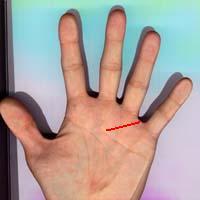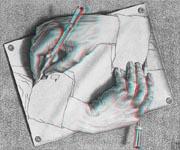
Do you think you are kinky? Have a look and see if you have a passion line on one or both of your hands (see picture left).
This has got to be one of the most interesting lines on the hand. The passion line is a line that goes from between the ring and little finger towards what is known by handreaders as the 'heart line'. The heart line is one of the three strongest lines on the palm. It crosses the palm horizontally, starting from the little finger side and ending somewhere below the middle and index finger (sometimes swooping upwards to the index finger). Palm lines in the area above the heart line, such as the passion line, tend to be found on people who are very sensual and enjoy flights of fantasy.
It is not uncommon to see a semi-circle type of formation, starting between the ring and little finger and ending between the index and middle finger. This is known as the 'girle of venus', and used to be known as the 'sex drugs and rock'n roll' line in traditional palmistry. It is said to be found on thrill seekers.
The passion line is more of a straight, rather than curved, line, plunging directly towards the heartline and sometimes passing through it. Its significance was discovered by Johnny Fincham. Not everyone has this marking, and a clear, deep line, unwavering and unbroken line is quite uncommon. It is said to be a sign of those who are kinky and like to explore their sexuality.









